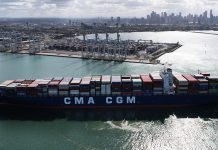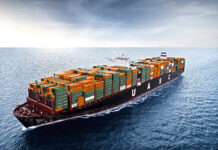
According to preliminary data from Japan’s transport ministry, the country’s six major ports processed 1.17 million TEUs in July, representing a 3.3% growth from the previous year.
This marks four consecutive months of year-on-year increase. Total exports accounted for 571,534 TEUs, up 3.3%, while imports reached 594,158 TEUs, up 3.2%.
In detail, port of Tokyo handled 346,740 TEUs, translating to an increase of 3.5%, with exports totalling 156,341 TEUs (up 2.3%) and imports at 190,399 TEUs (up 4.6%).
In contrast, Kawasaki saw a significant decline with throughput dropping 16.3% to 6,096 TEUs after five months of double-digit growth. Kawasaki’s exports fell 21.4% to 2,725 TEUs, while imports decreased by 11.8% to 3,371 TEUs.
Yokohama port experienced a positive trend, growing by 3.4% to 237,988 TEUs, with exports at 126,093 TEUs (up 4.9%) and imports at 111,895 TEUs (up 1.8%).
Furthermore, Nagoya processed 219,028 TEUs, representing a rise of 3.5%, comprising 112,240 TEUs of exports (up 3.6%) and 106,788 TEUs of imports (up 3.5%).
In addition, Osaka exported 76,818 TEUs (up 1.6%) and imported 95,755 TEUs (up 4.8%), resulting in a total of 172,573 TEUs, a growth of 3.4%.
Moreover, port of Kobe reported 183,267 TEUs, translating to a 2.9% increase, with exports of 97,317 TEUs (up 4.9%) and imports of 85,950 TEUs (up 0.9%).





